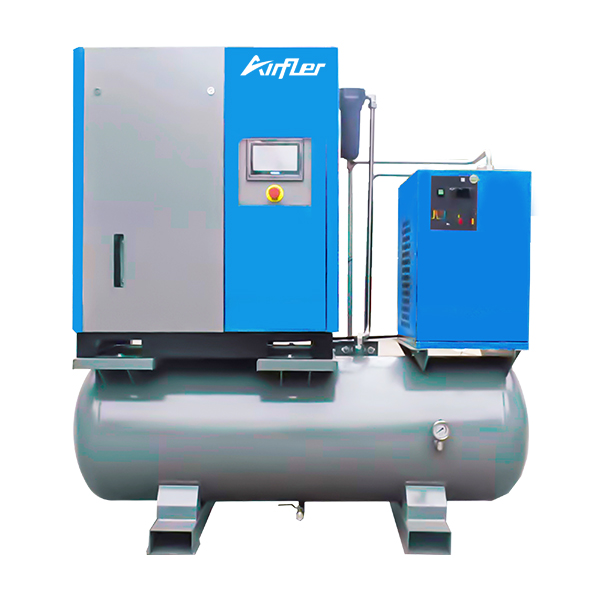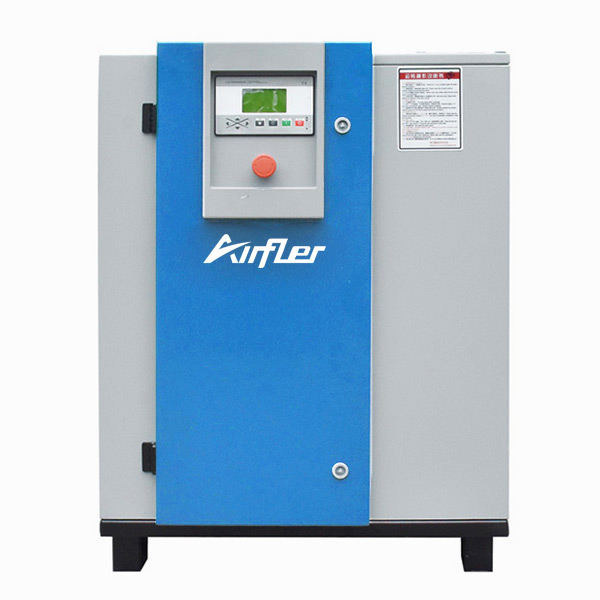I. Conventional Working Condition Parameter Adjustment
1. Pressure Parameter Adjustment
Adjust Pressure Switch/Sensor Settings:
Rotate the adjustment screw or input target values via the control panel.Clockwise: Increase pressure.
Counterclockwise: Decrease pressure.
Frequency Conversion Control:
Adjust the inverter output frequency to dynamically control pressure.Set loading pressure to 80%-90% of the rated value to avoid overpressure operation.
2. Temperature Parameter Optimization
Thermostat Calibration:
Calibrate the temperature control system to stabilize operating temperature at 40-60°C, preventing filter material brittleness or oil condensation.Cooling System Adjustment:
Adjust cooling water flow to 3.7 L/s (at a 15°C temperature difference) and regularly descale to enhance heat dissipation efficiency.
3. Frequency & Speed Matching
Low-Frequency Operation:
Use low-frequency mode for variable-frequency compressors to reduce air intake fluctuations and extend filter life.Start-Stop Buffer:
Set a 3-minute low-load buffer time to prevent instantaneous dust accumulation caused by frequent starts/stops.
II. High-Dust Condition Parameter Adjustment
1. Multi-Stage Filtration Optimization
Adopt three-stage filtration (G4 → F9 → H13).
Set the main filter section pressure difference threshold to 0.3 bar for early clogging warnings.
Configure reverse pulse cleaning programs to automatically clean pre-filters after each shift, preventing particle hardening.
2. Dynamic Parameter Linkage
Establish a "Pressure-Flow-Temperature" correlation model:
Automatically reduce exhaust pressure and increase cooling efficiency when dust concentration rises.
III. High-Humidity Condition Parameter Adjustment
1. Humidity Compensation
Install a humidity compensation module:
Automatically raise electric heating layer temperature by 5-10°C when humidity exceeds 80% to keep filters dry.
After installing waterproof filters, reduce maximum working pressure by 5%-10% to minimize moisture penetration risks.
2. Operating Pressure Optimization
Adjust pressure regulating valves to stabilize exhaust pressure within the set range, avoiding filter swelling due to excessive humidity.
IV. Low-Temperature Condition Parameter Adjustment
1. Preheating & Temperature Compensation
Execute a preheating program before startup:
Use electric heating to raise oil temperature above 20°C, preventing low-temperature damage.Adjust temperature control parameters to maintain operating temperature at 40-60°C when ambient temperature drops below 5°C.
V. Parameter Verification & Maintenance
1. Calibration & Testing
Calibrate sensor errors to <1% quarterly to ensure control logic matches actual conditions.
Perform a 30-minute no-load test after parameter adjustments, verifying system stability via pressure difference curves.
2. Standardized Maintenance
Establish an "Adjust-Evaluate-Iterate" closed-loop mechanism:
Dynamically update operational databases and continuously optimize parameter configurations.
Conclusion
By comprehensively adjusting pressure, temperature, and frequency parameters—combined with dynamic optimization for specific conditions (dust, humidity, temperature)—operational efficiency of air compressors can be significantly improved, while filter clogging risks are effectively mitigated.
 English
English 简体中文
简体中文 French
French English
English Portuguese
Portuguese Russian
Russian Spanish
Spanish






